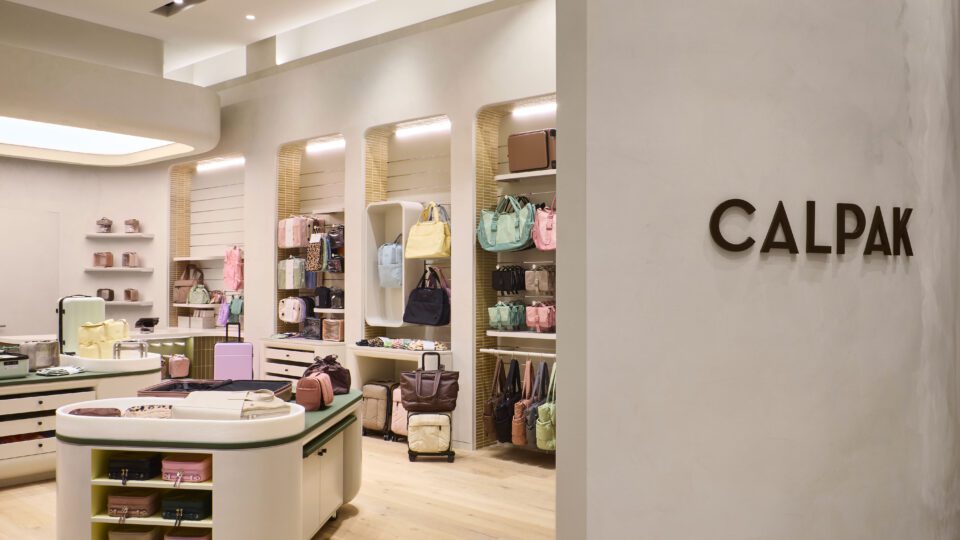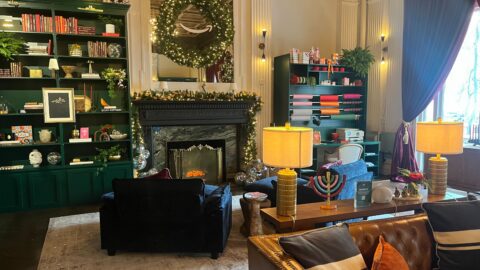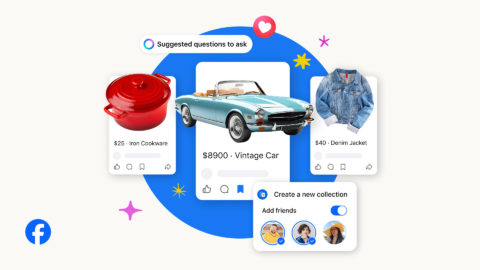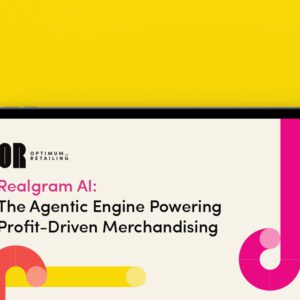When Edward and Judy Kwon founded Calpak 35 years ago, they modernized the luggage and travel goods sector by investing in innovative design and marketing. Over the past seven years, the brand’s VP of Marketing, Jeannie Shin, has witnessed and supported this evolution, especially as the brand built its direct-to-consumer (DTC) business online.
But as many brands have learned, the major growth unlock for Calpak’s next phase was physical retail — especially given the highly visual and tactile nature of its category. That’s why the brand has opened its first permanent store at Westfield Century City Mall in Los Angeles, which is not only an epicenter for Calpak’s core customer base, but also for the business itself.
“Los Angeles is the home of our main demo — we have about one million active users” in the area, Shin said in an interview with Retail TouchPoints. “We wanted to focus on driving extra lifetime value and increasing brand awareness in our top city. Success is looking [at those metrics] within a specific mile radius from our store. We’re expecting a lot of locals and customers familiar with our brand who are coming to the store for last-minute travel needs or for any products in our expanded categories.”
Windows of Opportunity
The 1,200-square-foot store features Calpak’s diverse product range — everything from luggage to baby bags and lunch bags. Given the diverse use cases for these products, the store hinges on one big idea: celebrating both everyday and faraway adventures.
The brand worked with design and architecture firm Gensler to bring this concept to life by creating various visual windows or pathways throughout the store. “These are windows into different spaces, windows of opportunity and windows of your life,” Shin said. “There’s a front window display, but behind that there is a wall with another window that peeks into the store. And then when you walk into the front of the store, there are all these different areas of products — different windows of different stages of your life, or moments of your life that you’re entering.” The final window, which leads to the luggage area, emulates the feeling of being in the air, almost like shoppers are looking out of an airplane window.
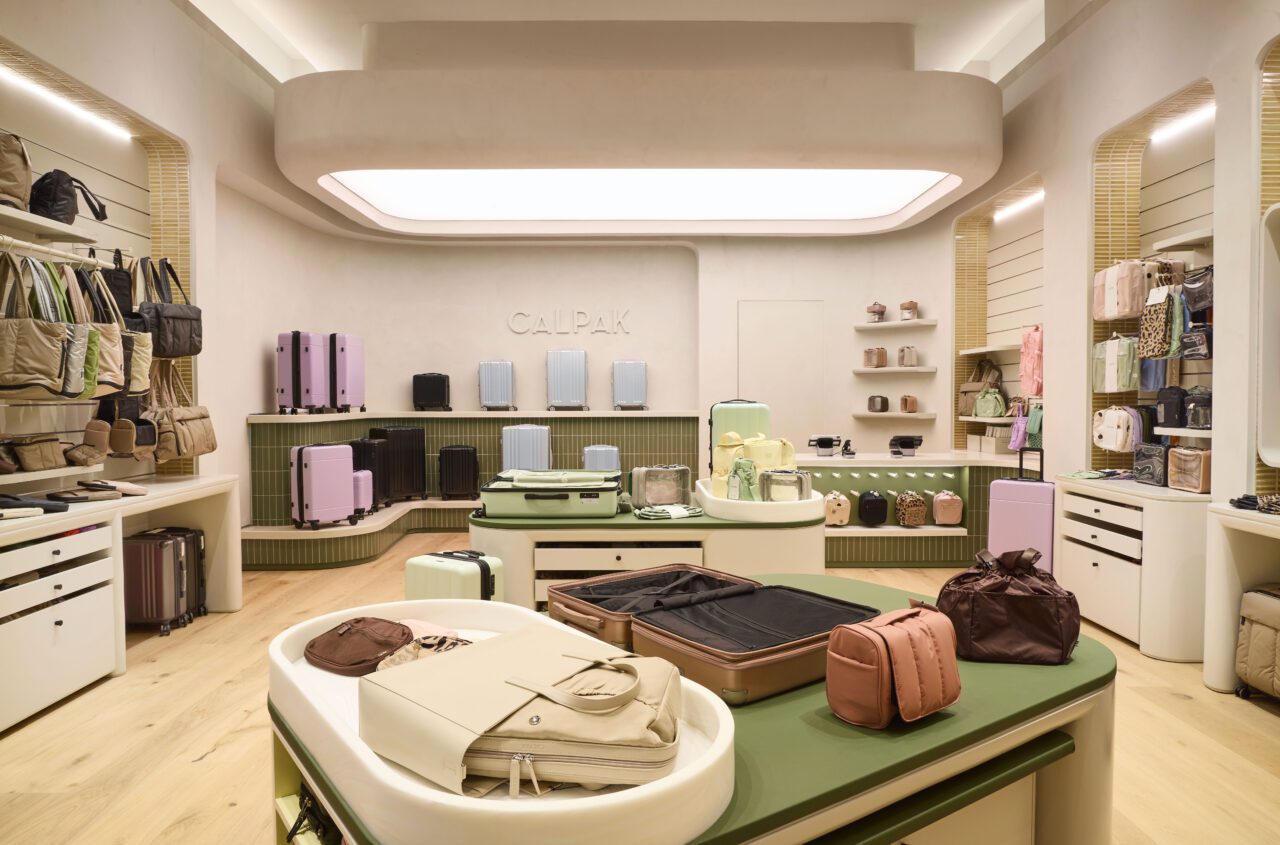
The store also has distinct spaces where shoppers can touch, feel and test products. For example, there are two packing stations that feature Calpak’s various luggage sizes and organizational offerings, so customers can see how much they can pack in a single bag. Additionally, the back wall of the store was designed to showcase Calpak’s broader luggage range, including multiple styles and colors.
“We like to say if you’re entering a new journey, whether it’s starting a new job, going on a trip or having kids, start with Calpak,” Shin said. “These are the moments where we hope customers stop by to buy all the items they need to keep them organized for all the journeys ahead of them. Being able to feel and touch the products in person drives a much larger opportunity.”
Westfield Century City is centrally located in Los Angeles, making it a retail Mecca of sorts for locals and tourists alike. That’s why during its two-week soft launch, Calpak found that not only did it need more luggage options available for purchase in the store; it also needed to have a diverse range of backpacks and duffle bags for local commuters. The soft launch also helped the team identify the final signage tweaks needed to ensure both brand fans and net-new customers felt empowered to navigate the store effectively.
Closing the Online Discovery Gap
Calpak has seen consistent growth online, but the “focused and funneled” nature of the online shopping experience meant many customers missed discovering the brand’s diverse product set. Of course, this also meant Calpak missed significant cross-selling and upselling opportunities.
“People are so focused in the funnel that they’re in,” Shin said. “If it’s travel, I view Calpak as a travel brand, so I’m just on the site for packing cubes and suitcases. You want to show them the breadth of products for all these other moments and milestones in life.”
And although Shin and the broader marketing and creative team have created content and messaging to bridge the education gap online, there are some characteristics that are extremely difficult, if not impossible, to explain online. “It’s really hard to understand how durable something is and how an item feels,” Shin said. “We have tried a lot of different ways to create that experience online. We had a tool that allowed you to enter your height so you could see the size of the luggage next to you. But the reality is that actually lifting the luggage, touching and feeling how durable it is, pulling the trolley up and down — these are things you simply can’t mimic online, no matter how hard you try.”
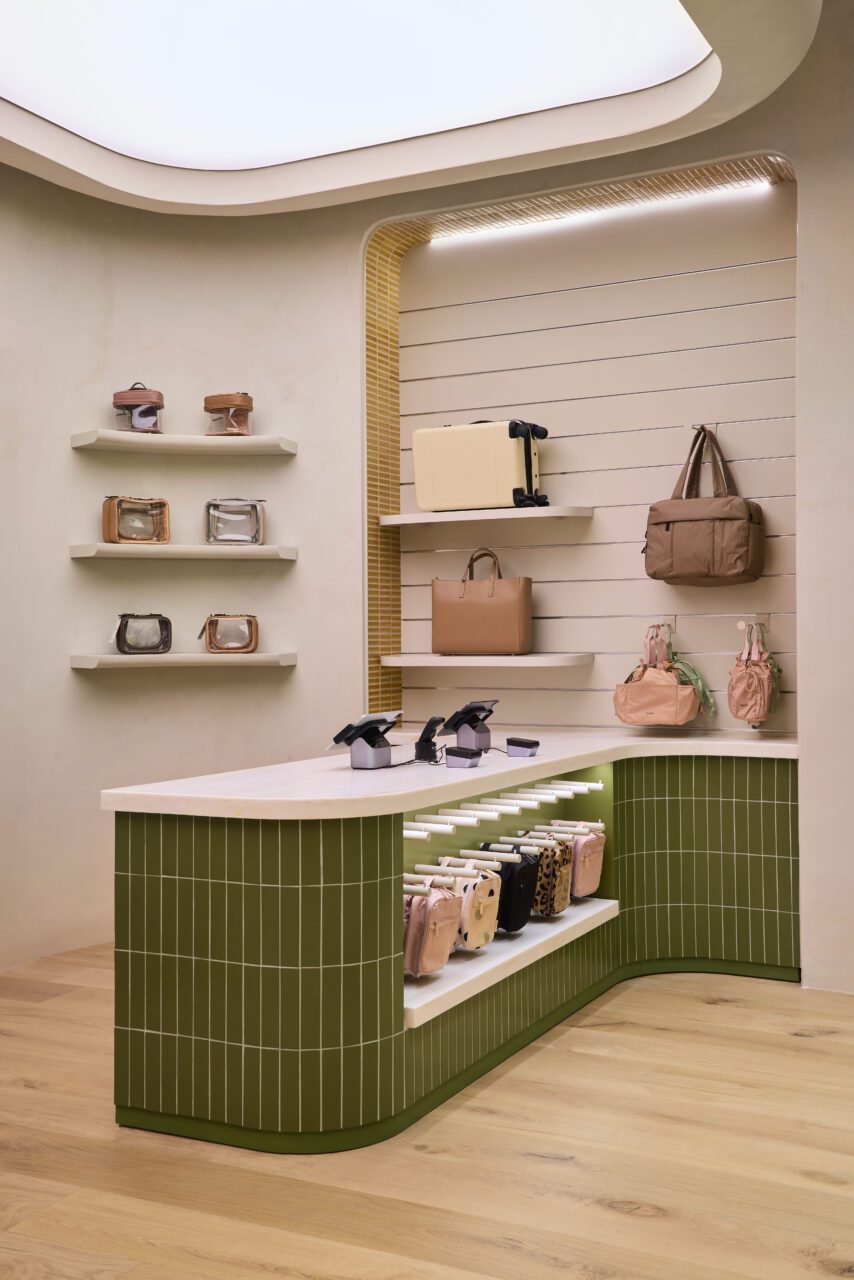
From Pop-Up to Permanent
Calpak initially realized the power of retail when it started forging partnerships with Nordstrom and other wholesale partners, according to Shin. In fact, shortly after Calpak’s in-store and online partnership with Nordstrom began in 2017, it quickly became a top brand in the retailer’s search bar, reaffirming the potential to expand into brick-and-mortar. (The brand recently became an online-only partner for Nordstrom.)
In 2019, Calpak tested its store hypothesis even further by opening a pop-up in New York City. The four-day activation aimed to gauge customer reception, and the team was “astounded” by the demand. “It was so successful that we had to get more inventory shifted down to the pop-up,” Shin admitted. “We really underestimated the potential of the pop-up experience for our customers.” Calpak put its brick-and-mortar plans on hold during the pandemic but then doubled down in 2022 when “revenge travel” ramped up and demand was more sustained.
Calpak undoubtedly tapped into the learnings from its pop-up to better plan for the LA store’s opening. Of course, the brand has prepared for high conversion rates by stocking the store with enough inventory. It also is launching Google inventory listings so that customers can easily see the number of units available in real time. However, the NYC pop-up also revealed that while a good portion of the store’s traffic was driven by existing Calpak customers, a significant number of new visitors dropped in because they needed luggage for an upcoming trip. This customer mix pointed to a clear opportunity for selling supporting accessories, such as travel cubes and makeup bags, which validated the brand’s diverse yet highly curated assortment.
Strengthening the Feedback Loop
Moving forward, Calpak plans to capitalize on its new LA roots by using the store as a fixture for in-person events and community-building. Because the team’s office is a short distance away, it creates a clear pipeline from the store floor to the executive team, which can help improve the brand’s feedback loop and foster customer loyalty.
“We’ve done events where customers have come up to me because I host all our livestreams. I see their name every week, and am so excited to finally see them in-person,” Shin said. “These types of experiences are so valuable for our brand that I think we really want to create a better feedback loop with our top customers. What better way than in person and within our store so we can make those immediate changes? We’re a nimble brand, so we can really take that feedback and make changes in real time. That’s what’s exciting.”



